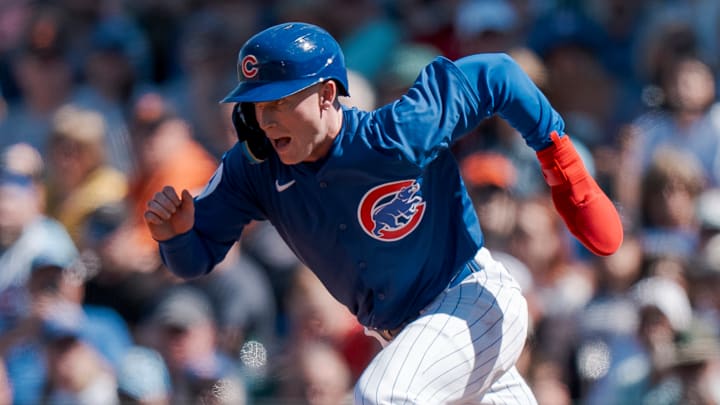In the wake of Lawrence Butler's extension with the Athletics, writers and fans across the country looked at their respective teams and outlined any prospective extension candidates. For the Chicago Cubs, nobody looms larger in that regard than speedy outfielder Pete Crow-Armstrong.
In a piece I penned in the immediate wake of the Butler news, I drew connections between that deal and what a potential extension between PCA and Chicago could look like. But if we take a step back and layer in a couple more names, we can really start to dial in on what sort of structure makes sense.
Outfielder Michael Harris II signed an eight-year, $72 million extension in the middle of his incredible rookie season with Atlanta back in 2022. En route to NL Rookie of the Year honors, the former first-round pick signed on the dotted line, giving the Braves yet another long-term piece with cost control.
Harris did a little of everything for Atlanta that year, slashing .297/.339/.514, hitting 19 home runs and swiping 20 bags, finishing the year with 5.2 bWAR. He hasn't hit that mark in the two years since, and has seen his offensive performance trend downward pretty dramatically (.722 OPS in 2024, down from .853 in 2022). But due to his back-loaded contract structure, he's made just $10.7 million in the big leagues and at 11.7 bWAR, the Braves have gotten their money's worth - and then some.
Crow-Armstrong was actually a better offensive player in the minors than Harris II (.883 OPS v. .806 OPS) and there's no comparing his baserunning and defensive abilities. For that reason, I'd say his earning potential could be higher in an extension because, as we saw early on last year, even when he struggles at the plate, he brings tremendous value in other areas of the game.
An extension doled out by an NL Central rival shows value in defense
Ke'Bryan Hayes has been an above-average offensive player just once in four full seasons in the league - and even then, he was barely above water (103 OPS+). But since debuting, he's been worth 13.4 bWAR, including a pair of 4.0+ bWAR campaigns.
Unlike the Harris II extension, Pittsburgh front-loaded the eight-year, $70 million deal, paying Hayes $10 million in 2022 and 2023, then $7 million last season. They'll pay him that sum annually through 2027, then $8 million in 2028 and 2029 before making a call on a team option for 2030. All this to say is there's fairly minimal long-term risk here.
The inherent risk with every player, on a long-term deal or not, is health - and back issues have been a recurring issue for Hayes in recent years. Coming off his best single-season performance to-date, Hayes missed considerable time last season due to injury and even when he was on the field, he wasn't putting up franchise cornerstone-level results.
Despite the poor baseball card numbers, Hayes still graded out well at third, ranking in the top 10 percent of players in OAA (6). That's where Hayes and Crow-Armstrong are similar: they have a built-in floor that's higher than most players given their defensive abilities. In a year where he was roughly 40 percent below average with the bat, Hayes still somehow offered a positive net value in 2024.
An eight-year deal somewhere in the $80 million range feels like a safe, established point to start with if the Cubs want to lock PCA up before what many hope will be a breakout season. Is there risk? Sure. But given ownership's unyielding focus on cost control and avoidance of record-setting free agent deals, the upside far outweighs those risks both in the short and long-term.
